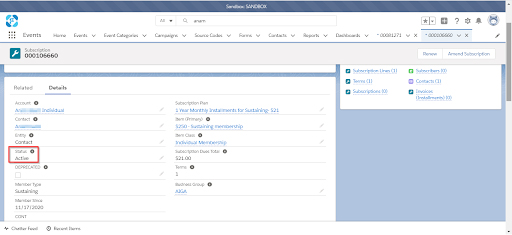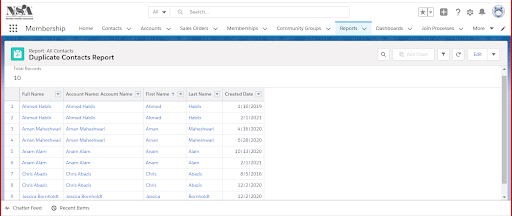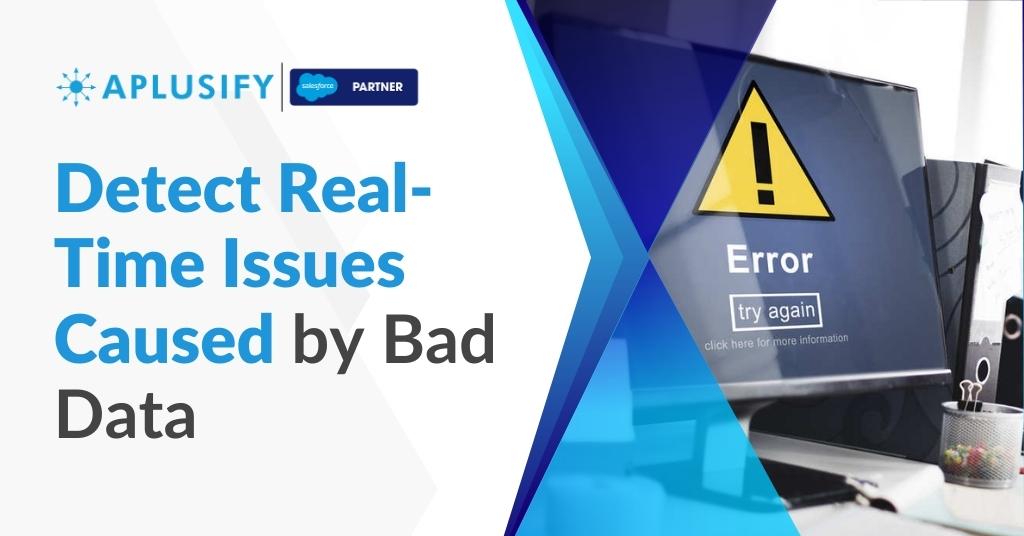Human error, failed tasks, the use of confusing information, and poor data collection practices are one of the most prominent reasons why bad data can threaten your database. Additionally, associations that store and manage their data in multiple systems are more prone to facing data health issues. In multiple cases, raw data collected is originally in a bad state and requires adequate cleansing before being stored in your system.
Good analytics depends on your data. Working with bad and irrelevant data will, in turn, hand over your metrics that will have no impact on your operations. If the data stored in your database has flaws, then the outcomes are unreliable even though you are investing resources in software to make an impact. With the process of data cleansing, there is a long list of pitfalls and situations you as an association can avoid.
Membership Active But Badges Expired
During system syncs, the membership data is aligned with the badges, as referred into the dashboard below. In case of a failed or unsuccessful sync job, the expiry date of the membership wasn’t updated; however, the membership is currently active, leading to a clash between data records.
Inaccuracies like this can only be detected if you run Data Health Check on your system that lays out reports like these portraying how membership data has expired despite an active membership.
Dashboard with Membership Details:

Dashboard with Membership Badge Details:

Drop Duplicates
Data duplication is a common unwanted phenomenon that happens during data collection and transfer. Usually, when organizations combine data from different systems or receive data from other sources or departments without conducting data health check operations, they are likely to infest their database with duplication. This consumes your resources and negatively affects your member’s insights without adding any worth of value to your operations.
Similarly, while integrating your Salesforce CRM with another system, there are high chances your system might be ingesting the same information multiple times.
Consider a scenario where Chris, a member of your association, submitted two different email addresses via two separate forms. Chances are high that your system is going to treat this information as two additional members. However, Data Cleansing can detect such duplication in your system, and then you can merge the data or remove one of them. Here is a dashboard that shows the detailed report of duplicate contacts and inputs:
Dashboard for Duplicate Data:

Incorrect User Inputs
Your systems is constantly changing and being flooded with data from members and the internal team. Without frequent validations and checkups lack of uneven formats in inputs can lead to inaccuracy during analytics and reports as your system might fail to read certain units that are different from the others.
It’s important to remember that in many commonly used data resources like date of birth, height, weight, and currency the units used across the glove are different. However, for your system, it’s ideal to follow a common standardized format. Failing can lead to data errors and long-term inconsistencies.
Remove Missing Data
When working with technology in handling your data, ignoring missing values in your data sets can be a disaster as algorithms do not accept them. Usually, when dealing with this situation, organizations have few options to pick from as a last resort. Preferably them being:
- Imputing- Firstly, you can fill up the missing values based on observations. During imputing values, you might also copy similar patterns of observations from data across your dataset.
- Dropping- Secondly, you can consider dropping observations with missing values during Data Cleansing. However, remember that doing this can lead you to lose information that might have impactful value if kept in your database. But calculating risks associated with each step, dropping is better than imputing missing values that may be inaccurate and impact your results in the long run.
- Flagging- Lastly, you can flag the missing observations. This means that you inform your algorithm about the missing values, which prevents the loss of information. To put it simply, the analytical models of your systems decode values that are missing. Flagging is usually done in cases where data is missing in a consistent format instead of randomly. And Flagging means telling your ML algorithms about any missing values.
For example, in the case of missing numbering data, you may fill it in as “0” instead of deleting the data. However, during statistical calculations, your system should ignore these zeros. In case of general missing observations, just flag the missing observations as “missing.” Here, you also make your algorithm understand the new pattern that a value is “unavailable.” You can also try changing the way you are going to use that data and navigate null values.
Think twice before taking any of these steps when handling Missing Data. Whether you decide to impute, drop, or flag missing values, will affect the accuracy of your dataset and analytics. Dropping a value may result in losing information while adding a presumptive input means risking losing data integrity, so be careful with both tactics. Here is a dashboard that shows the detailed information of missing data and inputs:
Dashboard for Missing Data:

Find Lack of Standardization
While proceeding with Data Cleansing, all your data should be in a uniform format and unit for each value. To begin with, all strings must be in the same case (upper or lower).
Similarly, metric conversions must be standardized. For example, if your dataset contains information on the heights of your members or donors, then the values should be the same unit. So you might need to convert meters to feet or vice versa if the values are inconsistent.
Ensure that you have standardized all the units of measurements in your database. No matter the data, be it weight, date of birth, or temperature, all these units should be in a uniform format. Lastly, when it comes to dates, either go for the USA or European format.
Data Cleansing at every step of data collection and storage is an essential process. With a perfect team assigned to manage your data – you as an association can dodge many prominent issues that come along with dirty data. Here at Aplusify, our experts can lead a team that comes together to solve your Data Health issues and ensure its safety at every level. Keep watching this space for more information on Detecting Real-Time Issues Caused by Bad Data, and we are positive that our webinar on Data Health Check will be of great
About Aplusify
Aplusify provides associations, nonprofits, and higher education institutions with the capacity and capability of maximizing their Salesforce platform. Our team of Salesforce-certified experts alleviates the technical weight of managing and implementing Salesforce so that you can focus on strategy and organizational mission. Find out how we can save you time, money, and stress with our Salesforce Managed Services.

